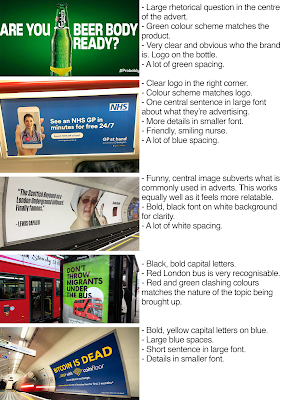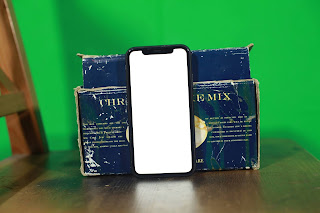Here I talk about the lectures we got on becoming industry-ready and what I learnt/what I went away and worked on afterwards.
Copyright and Finance
Copyright gives rights to the owner on how their material is used. Anything can be copyrighted that has been made through an independent intellectual effort. If the artefact is made in the UK, you don't need to apply for copyright as it's automatically covered. It covers the author/artist from their work being copied, distributed, adapted or publicly performed without their consent. This can have negative effects as well however, such as making busking illegal (which is why permits are always required for people to do this). Copyright cover lasts for life plus 70 years with regard to literary, dramatic, artistic and photographic works, however with sound recordings, the cover only lasts for 70 years from publication.
Copyright is also something that can be bought and sold to another party. This would be required were another party wanting to use the work for commercial purposes (like advertising). It is however not required for non-commercial, educational, research or private study purposes.
Alternatives to copyright include copyleft (gives permission for software or artistic work to be copied, reproduced, adapted but without financial gaining from it), and Creative Commons that allows work to be distributed, remixed or tweaked as long as credit is given to the original creator. There are also different types of Creative Commons agreements including BY, NC, SA, ND, which allow differing levels of lenience on what can and can't be done with the work produced.
I learned a lot here as I've never explored what it means for work to be copyrighted. I didn't realise there were different levels of what could/couldn't be done with the work and that there are different laws for each country on copyright. I will definitely consider how I share my own work from now on, and how I can best protect myself from having work plagiarised.
Freelancing
I learnt that freelancing is the main way people enter into the animation industry. To budget for a year of working freelance, you have to imagine you are working roughly an average of 35-40 weeks as briefs may not always be constant. There is also no cover in terms of sick pay or holiday leave so these need to be counted in with the budget.
A starting salary in the south of the UK is roughly £18-23k a year, so you have to make sure when freelancing that you are not undercharging. A good way not to be undercharged by the client is to set up a daily rate, rather than an hourly rate as this makes it harder for clients to haggle down the price. You must also never agree to lower your prices at all. An acceptable price would be between £150-200/day. Were you to charge £100/day and get this consistently across a year, that comes to a salary of £26k/year.
When considering your prices, you have to consider overheads (electricity, software, broadband, heating, tax, insurance, pension, office space, materials). On top of this is general living expenses (food and accommodation), which is roughly £8k (it is more around London).
After the lecture, I thought about some of the expenses that being a set constructor/model maker would include:
- Laptop
- £1200 (average price for a Mac)
- DSLR camera
- Between £80 (second hand) and £400 (brand new)
- Stop-motion software
- Between £10 (Stop Motion Studio) and £300 (Dragonframe)
- Materials for sets (wood, screws, cardboard, glue, paint)
- Between £50-100 per project
- Equipment for building sets (drill and drill bits, hammer, saw, screw drivers, pliers)
- Drill - £50, Drill Bit - £1-2, Saw - £6, Hammer/Screwdriver/Pliers - £5
- Materials for models (plasticine, felt, wire, putty, foam, wood)
- Wire - £15, Foam - £5, Felt - £2/ A4 sheet, Wood (usually found)
- Studio space
- Can be upwards of £500-1000/day depending on area, or included within the price of rent by working from home
- Studio lights
- Between £50-100 (high-end) or £2 for Torches
All of these specific elements cost a lot of money and these would need to be considered with the budget on top of day to day expenses.
Social Media and Marketing
This is definitely an area that I need to focus on as I don't have a large social media presence when it comes to my art work - I don't even have a phone. I made an Instagram account a while ago for my work however I haven't updated it for a long time now. Consistency is the key to growing a following as well as posting relevant things that you are enthusiastic about. The lesson just so coincided with a period in which I've been making a lot of cut-up poetry and I thought this would be a great way to revitalise the account. As it is an account for my music, creating music is a long process and something I wasn't sure how to post about regularly on the account, however introducing these cut-up poems is a quick and (hopefully!) an entertaining form of post.
This was my account before:
I've since updated my bio to make it clear the things people can expect me to post about.
Within a day of posting the first poem and labelling it with micro-hashtags, I was getting a few likes and even one response from accounts that were beyond my friend circle. I'll keep going with marketing my poetry and see if my following grows at all because of it.
I've also slowly been updating the branding on my YouTube channel, which is ultimately where I want my following to go to. My instagram page link directs people to this. I started with the web banner. I'm keeping everything in the same blue colour to create a unified brand identity across all my platforms.
In terms of marketing, this is all about understanding what the customer wants. By identifying a customer you can develop a project, promote it to that market, assess the performance of the product and finally develop the price for it. It is important to research what is already out there and how you think you can improve on what's out there/where gaps in the market are. I filled in a SWOT sheet to write down my own strengths, weaknesses, opportunities and threats.
Sitting Comfortably Lecture
While I feel that I'm very good at keeping my mind healthy, I definitely don't consider my physical body as much while working. I definitely spend too long hunched over computers as well as sitting cross-legged on my bed for long period of times. This could lead to pains later on in life that otherwise wouldn't be an issue if my posture was better. I don't struggle with any pains at the moment but focusing more on my posture will make sure that I definitely don't get any pains in the future. I do take a lot of breaks however to get up and move, which definitely helps. Also with stop-motion, I have to be moving a lot of the time, which is also much healthier than sitting down constantly.
When considering hand strains, it is good with stop-motion that I'm required to do many different actions compared with 2D animating where drawing is a very repetitive action, which is more likely to lead to RSI. Some actions to help with strains could be pushing against a wall, squeezing stress balls or stretching your wrists from time to time.















































































